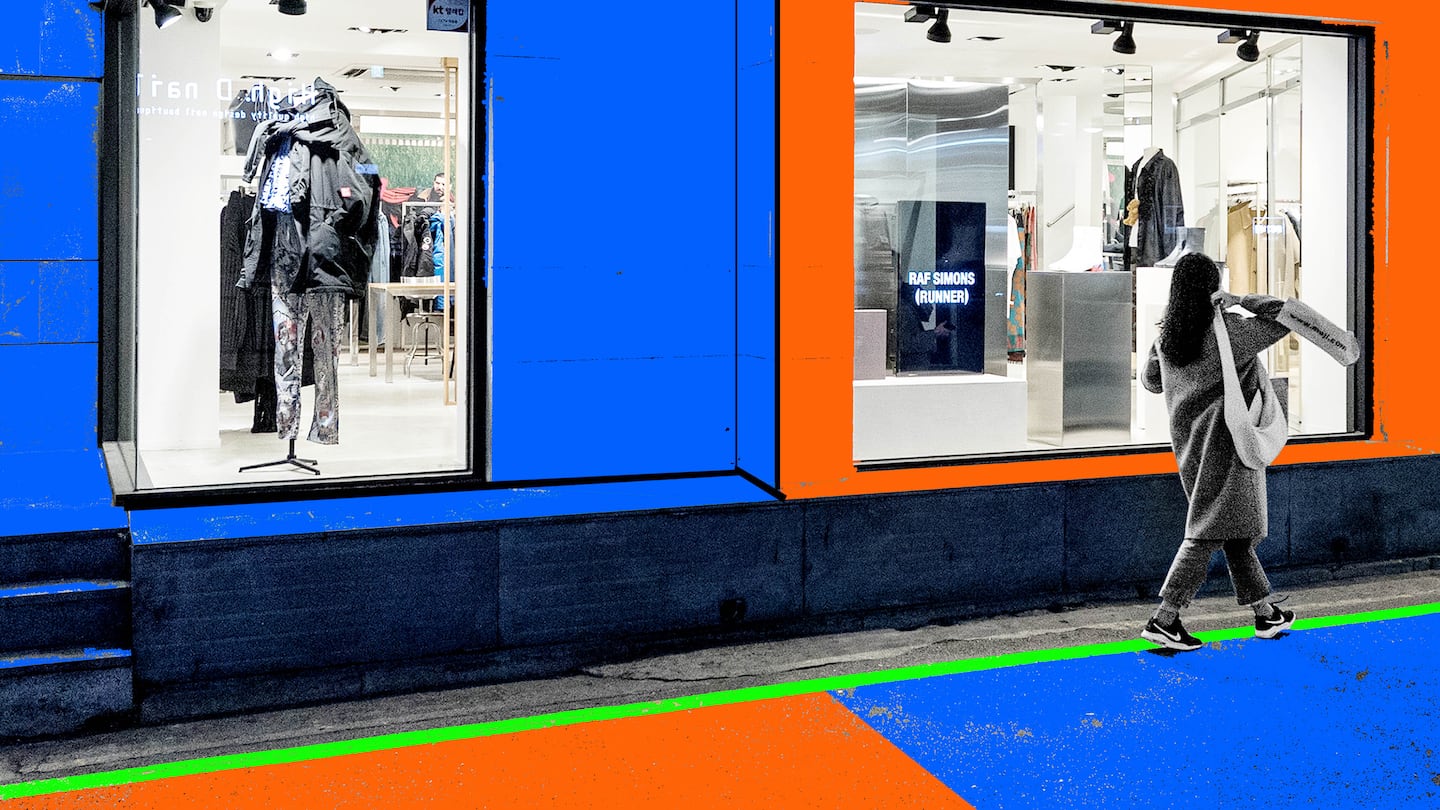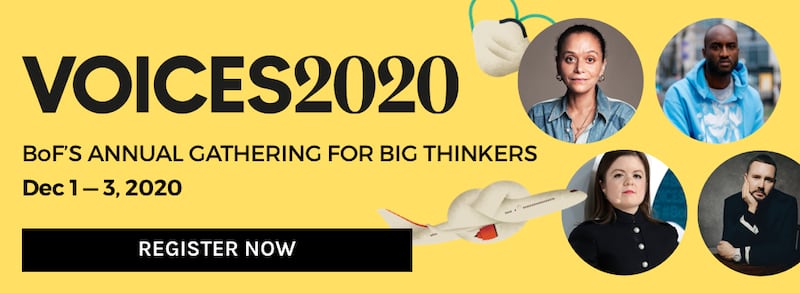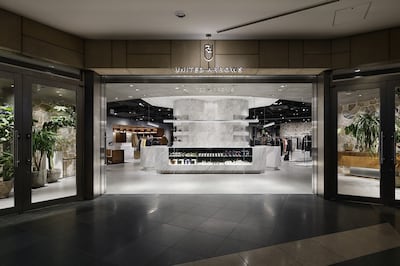
The Business of Fashion
Agenda-setting intelligence, analysis and advice for the global fashion community.

Agenda-setting intelligence, analysis and advice for the global fashion community.

 Opens in new window
Opens in new window“We don’t have our own flagship stores yet, so multi-brand stores are [still] very important for [us],” said Valentina Ignatova, co-founder of By Far.
Across global markets, the pandemic has proven a boon for leading e-commerce marketplaces and a fatal blow for many offline-reliant department stores. Between these two extremes sit smaller businesses like multi-brand boutiques, many of which are working hard to reach consumers in a post-pandemic world.
Asia’s multi-brand ecosystem was booming before Covid-19 hit. The rise of young consumers in markets from China to South Korea fostered demand for buyers to curate niche selections of global and homegrown brands. Many of these boutiques have grown beyond brand discovery sites into travel destinations, drawing celebrities, influencers and tourists to their doors while boosting sales for both established and up-and-coming designers based in Europe, the US and elsewhere.
Sales in Asia are growing rapidly for brands like By Far, which Ignatova largely attributes to the comparatively rapid recovery of retail in markets like China and South Korea, where the brand is stocked by retailers like Ethos in Hong Kong and Boon the Shop in Seoul.
ADVERTISEMENT
In China, where last month’s GDP data confirmed that the economy is on track to remain the world’s only major growth engine for 2020, the number of multi-brand stores increased six-fold between 2014 and 2019, according to the country’s Fashion Designers Association. Sales-wise, many designers and industry leaders are reporting business as usual in major cities like Shanghai. While it’s true that Japan and Hong Kong are facing a significantly slower recovery than Mainland China, WHO data paints a much bleaker picture in Europe and the US, where experts are expecting a return to pre-crisis growth to take at least a year, even with news of an effective vaccine.
As European countries descend into another round of lockdowns, it isn’t China alone that brands will be leaning on. Foot traffic and consumer appetite in other key Asian markets can support global brands while their local sales stall. From making purchases on WhatsApp and shopping from stores abroad in lieu of travelling, here’s what people in Tokyo, Seoul and Hong Kong are buying and how they’re going about it.
Buying Local, Craving Curation
While e-commerce giants remain the big winners in the year of the pandemic, multi-brand boutiques like Seoul’s Addicted, Hong Kong’s Kapok and Tokyo’s Restir are putting the worst behind them thanks to local support — a necessity, given that the three cities have yet to welcome tourists back to their streets.
“Every season, we got new clients from abroad... [but] we’re better [off than most this year because] we mostly have local customers,” said Maiko Shibata, creative director of Japanese multi-brand retailer Restir. Its flagship is located in Tokyo’s Roppongi district (less touristy than Ginza, Harajuku and Omotesando) and stocks brands from Balenciaga to Undercover.
Most Korean multi-brand stores' sales are driven by local VIP customers.
Like Hong Kong and South Korea, Japan didn’t implement a full lockdown, but the situation was tough nonetheless, said Shibata. By June, however, sales had reached their pre-Covid levels. Lim Hea-jin, buyer at Addicted in Seoul, which stocks brands like Telfar and J.W. Anderson, has seen sales double in the last six months.
Despite being well known as a celebrity favourite and chosen by Seoul’s municipal government as a listed tourism attraction in a campaign to attract even more big spenders from places like China, 90 percent of Addicted’s customers are locals.
“Compared to department stores, most Korean multi-brand stores' sales are driven by local VIP customers,” added fashion director and former Vogue Korea digital director Kim Ji-young.
ADVERTISEMENT
According to Lim, the lack of a full lockdown in Seoul meant that shoppers have largely retained their jobs and are willing to spend; stores with a sharp eye for curation, like Addicted, are better positioned to recommend unique finds than e-commerce marketplaces flooded with stock. With this in mind, brands need to grow their networks strategically while taking note of popular items to keep in mind for future exclusives and collaborations.
Shibata acknowledged that not all of Tokyo’s multi-brand stores will make it through this slump, but retailers with a cutting-edge, thoughtful selection will.
“We have so many, too many stores with a similar concept in the same area. Without uniqueness and competitiveness... the number of closing stores will increase.”
Due to Hong Kong’s pro-democracy protests, the city’s retail sector was hit harder and for longer than other Asian markets. Arnault Castel, founder of Kapok, which stocks the likes of APC and Veja, has seen an uptick since October but has completely reset his expectations. Though Kapok has always catered to a local audience, that strategy has only become more important for the store’s survival.
“Create a strong relationship with people who live here and make them your key audience. That’s the main lesson we should all remember even when tourists come back,” he said.
Emerging, Affordable or Exclusive
Interest in newer homegrown brands is growing, said Hirofumi Kurino, co-founder and creative advisor of Japanese retail group United Arrows. Addicted’s Lim is also seeing a surge in demand for emerging labels, though the boutique’s selection is focused on international designers.
Lim reckons that this is an opportune moment for young designers to target Korean customers: at Addicted, brands like Namesake, Stefan Cooke and Bode have been selling especially well.
ADVERTISEMENT
“People have a less fixed idea about brands and specific items than usual,” she told BoF. “[Bode] has a limited number of [stockists] and since our customers are not able to travel, you know where they go.”

Buyers appealing to younger customers will increasingly focus on discovering affordable or striking brands rather than defaulting to go-to designers, said Kim. Castel and Kurino’s teams are working to stock more affordable products: “With tourists, the conversion rate was high, now people are worried,” Castel said, mentioning layoffs at major companies like HSBC and Cathay Pacific. Meanwhile, United Arrows' buyers are buying “realistically” rather than vying for trendiness, said Kurino.
Indeed, this uptick in demand for lesser-known labels coincides with a long-term shift in the way multi-brand boutiques are buying. Covid-19 has further pushed luxury players to rethink their wholesale footprints in major cities and focus on a shaved-down number of own-brand stores. Moreover, the growth of luxury brands' social media presences means that they no longer need presences in multi-brand or department stores for PR purposes, said Shibata.
Emerging designers should strike while the iron is hot — if they’re able to leverage exclusive items, collaborations, or release affordable entry-point products, all the better.
“We’ve been required to reconsider the way [we] pick up brands, and this pandemic accelerates the speed [of that] change,” she said, adding that she is working to introduce more small, up-and-coming designers to Restir’s mix.
Major luxury names will remain mainstays, but exclusive items will help differentiate the boutique as a shopping destination. Just recently, the retailer sold out of exclusive T-shirts and hoodies from Japanese streetwear brand Wind and Sea within an hour of the products landing on their website.
Demanding Digital
Like businesses across the globe, multi-brand stores have been pushed to digitise. But not all of them are going about it in the same way, and brands should map out their content strategies accordingly.
Addicted’s website has been up and running since 2003 and drives over 30 percent of the retailer’s sales, but has in the past 17 years only been available to some 100,000 subscribed members — a move intended to up the channel’s exclusivity factor. The business has received an overwhelming amount of emails, calls and DMs from shoppers in China, Europe, the US and Japan and is working to open e-commerce up to the public.
“It’s hard to say that the virus will come to an end any soon, so opening our website to more people and doing international shipping might be a way for us [to fight] against coronavirus in the long term,” said Lim.
When we’re doing well we’d say ‘okay, we’ll do it later’...with Covid-19, we had no choice.
Castel relaunched Kapok’s website during lockdown and has also begun clienteling on WhatsApp and introduced livestreaming to the retailer’s content output. Store staff have had more time on their hands due to low foot traffic and are helping out with social media and fulfilling online orders. Since the first lockdown, Kapok’s e-commerce has grown from making up 10 percent of total sales to 25 percent, and clienteling now makes up 5 percent of orders.
Neither Restir nor Addicted have rolled out clienteling services, though the former’s own app allows customers to reserve items or place orders; usage is up around 115 percent year-on-year. According to Lim, Addicted opted out of clienteling through local apps Kako and Naver and reckons that the two are more suitable for mass-market players.
For brands, it’s time to work closely with multi-brand partners in Asia to equip them with content and storytelling tools so that their digital efforts — be it on livestream or messaging apps — can resonate with customers.
Castel’s digital revamp was on the to-do list before the pandemic hit but taking the plunge has armed the boutique for future bumps in the road.
“It’s things we always wanted to do, but when we’re doing well we’d say 'okay, we’ll do it later,” he said. “With Covid-19, we had no choice.”
Related Articles:
Asia’s Recovery Roadmap for Luxury
Luxury Brands Never Embraced E-Commerce in Japan. Now, They’re Regretting It.
Is This the End of Hong Kong as a Luxury Mecca?
BoF’s ANNUAL GATHERING FOR BIG THINKERS
VOICES brings together the movers, shakers and trailblazers of the global fashion industry and unites them with the big thinkers, entrepreneurs and inspiring people who are shaping the wider world, hosted by BoF founder and editor-in-chief, Imran Amed, and led by BoF's expert editors and correspondents.
Register now to reserve your spot.
1. THE WIDER WORLD: Making sense of 2020 and charting a way forward
2. INSIDE THE FASHION SYSTEM: Addressing the industry’s most important challenges and opportunities
3. TECHNOLOGY & INNOVATION: Exploring how new technologies will change consumer behaviour
4. REINVENTING RETAIL: Understanding how forces accelerated by the pandemic are completely reshaping the retail landscape
5. LIVE YOUR BEST LIFE: Finding the balance, insight and inspiration to be the most authentic, healthy version of yourself
JOIN US FOR A GLOBAL CONVERSATION ABOUT THE FUTURE OF THE FASHION INDUSTRY
This year, VOICES will be delivered via a live broadcast adapted to the unique circumstances of the Covid-19 era — and BoF Professional and BoF Professional Student members anywhere in the world can take part in this live global conversation as the industry looks ahead to 2021. If you are not a member, sign up today with our 30 day trial, including access to VOICES 2020.
Though e-commerce reshaped retailing in the US and Europe even before the pandemic, a confluence of economic, financial and logistical circumstance kept the South American nation insulated from the trend until later.
This week’s round-up of global markets fashion business news also features Korean shopping app Ably, Kenya’s second-hand clothing trade and the EU’s bid to curb forced labour in Chinese cotton.
From Viviano Sue to Soshi Otsuki, a new generation of Tokyo-based designers are preparing to make their international breakthrough.
This week’s round-up of global markets fashion business news also features Latin American mall giants, Nigerian craft entrepreneurs and the mixed picture of China’s luxury market.